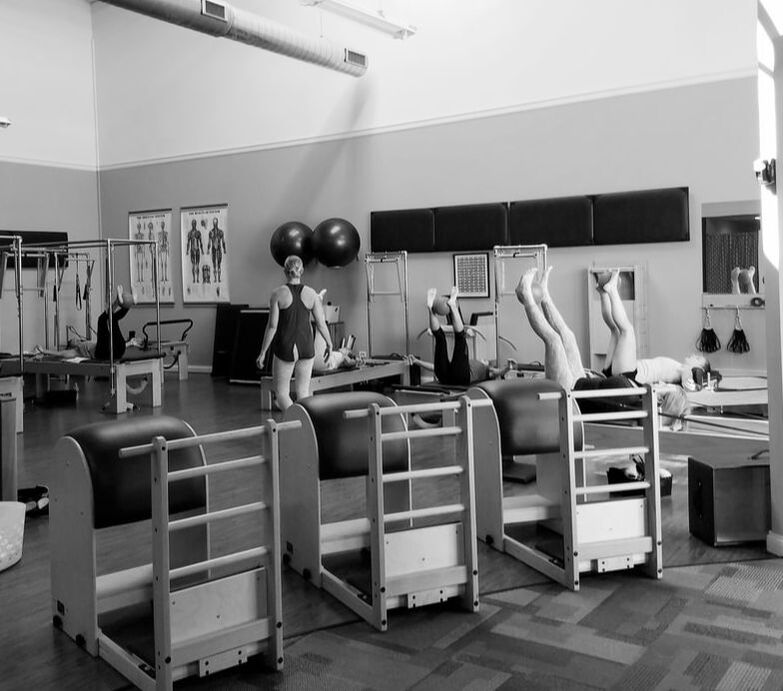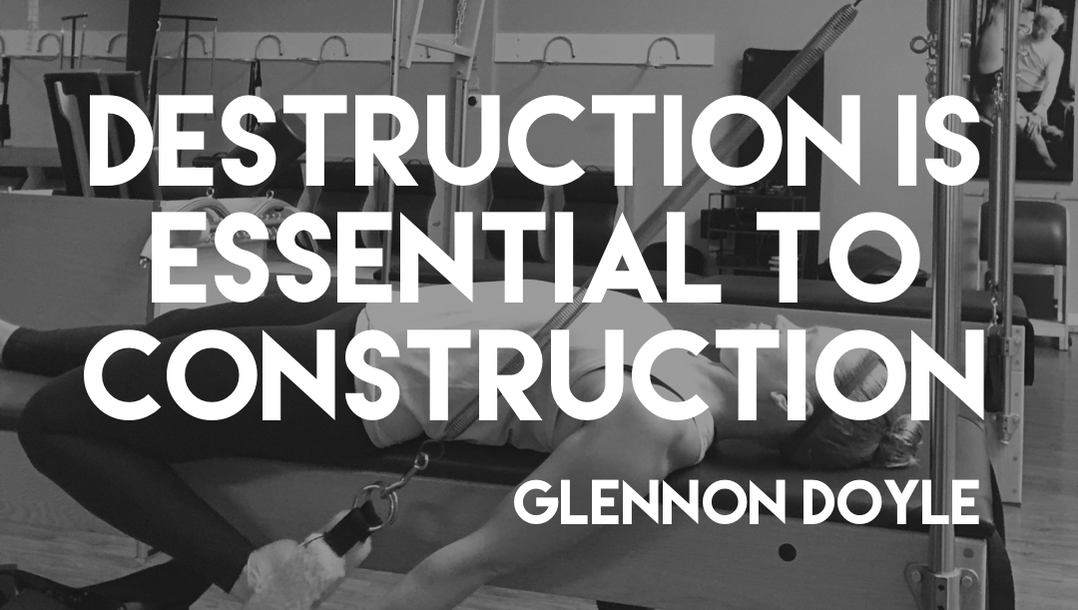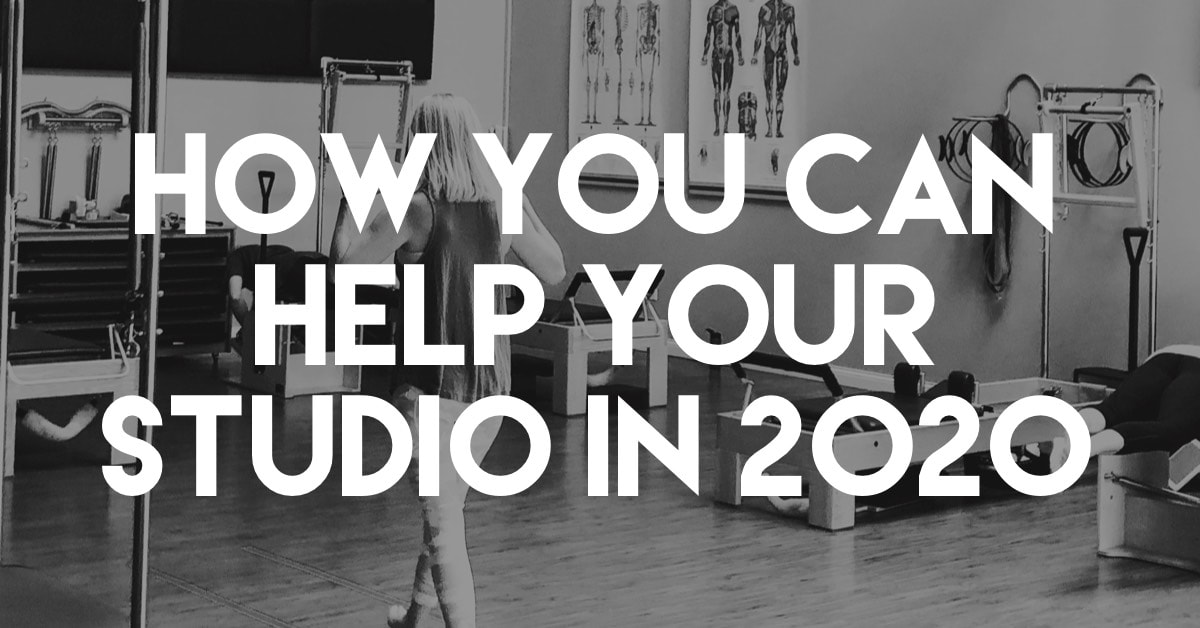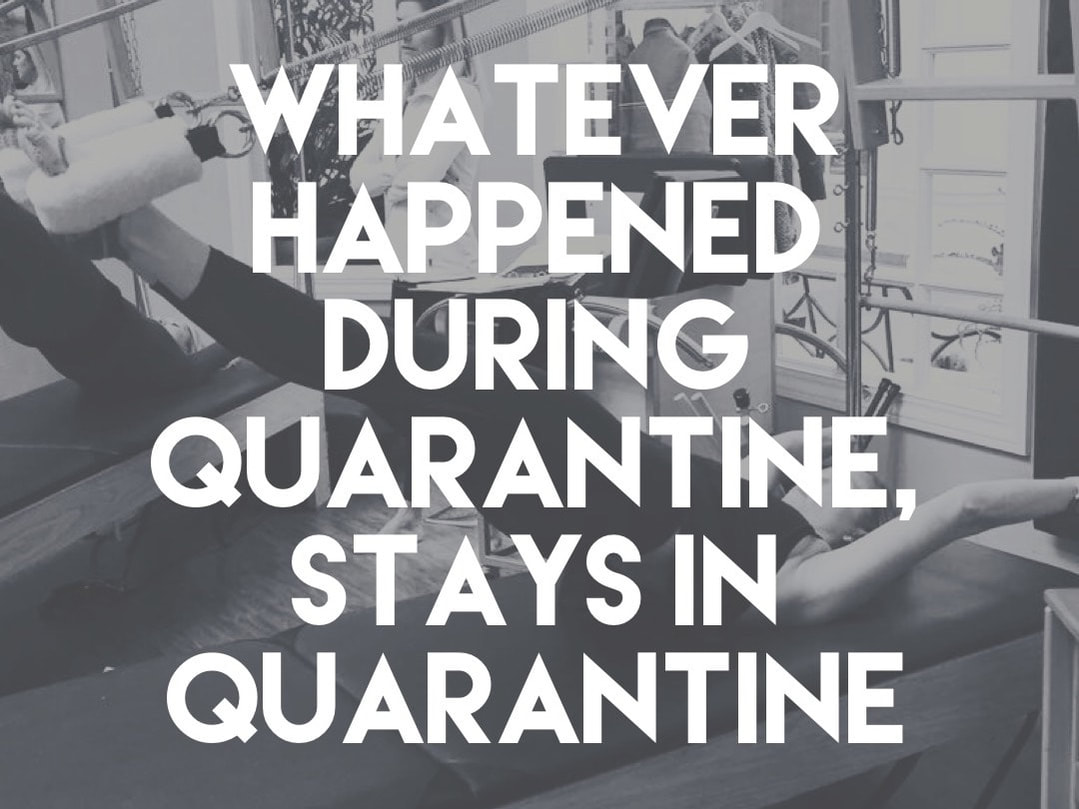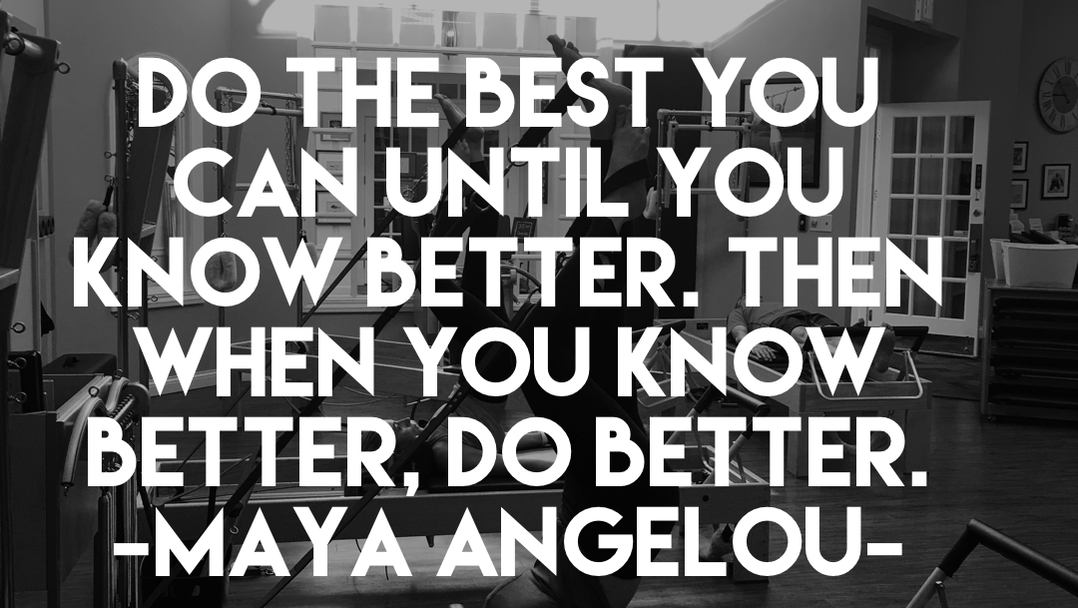|
If you’ve recently attended a Pilates class in a private studio or gym/health club setting, you may have heard a variety of phrases floating around.
Classical. Contemporary. Fusion. Mat. Apparatus. Advanced. Fundamental. Multi Level. These are a few examples of terms that studios use to describe their Pilates classes to give you an idea of what to expect. However, these terms can be confusing and misleading. Let’s examine the basics and create some clarity. Difficulty Levels: Though every studio has their own system, the following are fairly standard designations when it comes to the difficulty level of a class. The starting point is the Fundamental level upon which all the higher level Pilates exercises build. These exercises are meant to be the foundation of your Intermediate and Advanced work. You might start with the basic plank position or lying on your back with legs lifted in table top prior to intermediate work which may add in dynamic movement. As you work toward the advanced repertoire, the exercises become more complex, often moving the spine or torso and extremities together in more complex choreography. Some of the truly advanced exercises are not appropriate for group work as they require spotting from an instructor. Many group classes will be primarily a combination of the fundamental and intermediate work, with advanced level work sprinkled throughout. At Tensile Strength Studio, all classes are Multi Level, consisting of a variety of levels which makes the class appropriate for most clients. Your instructor may challenge your class more or less by pushing the pacing of the class, adding extra variations or choreography to achieve a challenging, but accessible workout. Clients with preexisting conditions or injuries that may affect their ability to move fluidly through a class may be in private sessions where the instructor can tailor the workout to your specific conditions. Be sure to chat with studio staff prior to attending class if you are concerned about any movement restrictions. Mat or Apparatus: Historically, to find an apparatus based workout, it was necessary to go to a Pilates studio. However, in the last 10-15 years Pilates apparatus have become more commonplace in health clubs and fitness centers where Pilates Mat based classes were the norm. The fundamentals of Pilates are the same whether you are on a mat or equipment. Mat Pilates is executed mostly with your own body weight and gravity as your resistance, occasionally incorporating bands, small weights, rings, balls, etc. Pilates Apparatus classes are performed on specialized equipment, which may include the Reformer, Cadillac, Chair, Small or Large barrels in addition to smaller props previously mentioned. The use of equipment can either offer more support or more challenge depending on the design of the workout. The Great Style Debate: Which is the best style of Pilates? Classical? Contemporary? Fusion? You may get a different answer depending on who you talk to. Classical: The Classical Pilates repertoire follows very closely to Joseph Pilates’ original work and order, created nearly 100 years ago. You may hear the words “first generation” or “second generation” when referring to certain instructors, the former being instructors who studied directly under Pilates himself and the latter being instructors that were trained from a first generation teacher. With each generation, the method changed a bit depending on the influences of the instructors. Today, the method has also evolved with the advancement of movement science/biomechanics. Classical Pilates is often performed in a set order with a specific amount of reps for each exercise. To be considered Classical, strict protocols are followed for both Mat and Apparatus work. Contemporary: One of the main distinctions of Contemporary Pilates is the introduction of variations in movement and the addition of props. Practitioners of contemporary Pilates believe it offers more challenge through variety, but the classical adherents find that same challenge through working deeper into the original work. Contemporary is a broad distinction and can incorporate most any modern form of the work that has developed over the years since Joseph Pilates, keeping in line with the spirit of the original method while integrating current knowledge of the body and biomechanics. Fusion: Fusion based classes combine Pilates with other forms of movement such as yoga, strength training, suspension training, boxing etc. Fusion classes may be performed on the apparatus or mat. Our studio: All of our instructors at Tensile Strength studio began their education with comprehensive Classical training and are NCPT’s (Nationally Certified Pilates Teachers). They have completed a minimum of 450 hours of in person learning, student teaching, observation and personal practice. In order to maintain their certification, our instructors complete 16 or more hours of continuing education every 2 years. These education hours may vary based on the instructor's interests, and will often shape how they teach in the future. Though our instructors begin their journey with the classical work, over time they develop their own perspective and approach to the work. We recommend that clients try a variety of classes as each instructor has unique areas of strength and focus. Chat with us prior to class about any movement or health restrictions and your goals so we can maximize your experience at Tensile Strength Studio. Our collective 50 years of experience as instructors, teacher trainers, and industry leaders positions us to help you fulfill your Pilates goals.
2 Comments
By Jessica Schmidley
Two things have been occupying my mind lately; planning a kitchen renovation and Glennon Doyle’s memoir “Untamed”. I’m a pretty quick reader, I can finish most novels within a few days once I get going, but something about this book has me taking a bit more time with it. I’m really digging in and taking the time to get to know the author and digest what she’s saying as I move through it. A few nights ago I read the following passage: “Destruction is essential to construction. If we want to build new, we must be willing to let the old burn”. -Glennon Doyle, Untamed This hit me particularly because of our remodeling project, and the anxiety that comes with tearing our kitchen down to studs and starting over. I worry about screwing it up, not making the best decisions or choosing the wrong crew to do the job. When I sat and thought about my specific “construction”, I realized that the “destruction” was indeed essential to my process. I have to give in to the notion of tearing apart what I have, in order to get what I want. The way I see it, there’s always a risk of it not ending up the way you envisioned even with the best laid plans. My fear was inhibiting me from making a decision. I was worrying myself further away from something I wanted. By doing this, I was just solidifying myself right where I stood, I would never make any progress this way. I would be destined to keep looking at my battered cabinets and chipped tile floors just as I had for the past 5 years. I’m applying this concept to a very literal issue that I’m experiencing, which I realize is quite trivial in the scheme of things. However, the concept of construction helped me to visualize this because it was right in front of me. As I re-read that text a few more times I began to see deeper meanings, more internal and less obvious to the naked eye. I talk to people all the time who want to see a change in their lives but are unwilling or unable to make the requisite steps to get there. Another saying that comes to mind is, “nothing will change unless you do.” If you keep making the same decisions and keep following the same path each day, nothing will change. You will be destined to be in the same place a year from now. “If we want to build new, we must be willing to let the old burn.” You have to let go of old habits, let go of those parts of your life that aren’t serving this new life that you want. This can be difficult. I completely understand that. But if you want to change, you have to put in the work and actually change. Apply this concept to your relationships, job, family or goals. At the end of the day, ‘wanting’ isn’t enough. You have to get in there, get dirty and break down those walls in order to build the beautiful life (or kitchen) you want. by Jo Ann Graser
The following article really hit home. The issues addressed are something we in the boutique fitness business have been facing daily for 5 months now and there is no end in sight. Every day I hear about colleagues around the world closing their studios and it tears me apart to imagine what they are going through. My life’s work is reflected in the joy that our clients find through improved health and fitness. None of that is possible if we don't make it through this. I have to believe that with the strength of our brilliant teachers and staff and all of you, we will come through this together, stronger than ever. We hear from clients asking regularly how they can help, here is how. Click the button below for an article that best describes what small studios like ours are facing and how you can help keep our studio alive. By Jessica Schmidley
I had dessert every night for 10 weeks. Let’s face it, shelter in place was stressful. Is sugar the best way to counteract that stress? Probably not. But you know what? While the world felt like it was going crazy around us, my future felt uncertain, my stress level was at an all-time high...dessert was something that I could look forward to every night. My husband said it best, “vacations are canceled, all social events are postponed for the foreseeable future, and the world feels like it’s falling apart. We could all use a little something to look forward to each day”. When he put it like that, I couldn’t help but agree. So I went ahead and had dessert every night. Some nights it was as simple as a few pieces of dark chocolate, others it was ice cream. I don’t regret it. So how did I feel after 10 weeks of that? Not terrible but not great either. We were diligent about activity and kept our meals as “normal” as possible. However, we got to a point where it was time to adjust our habits because dessert every night (or cocktails or pizza or whatever the vice) wasn’t going to keep us on track for our goals over the long haul. Quarantine threw a lot of people off of their usual habits. People who are normally very diligent about their workouts or eating were suddenly forced to change their whole routine. Parents were suddenly homeschool teachers, managing e-learning while doing their daily jobs and tasks. For many, it meant that their workout had to take a backseat. Say this with me. "Whatever happened during quarantine, stays in quarantine." Quit trying to rationalize your behavior, or beat yourself up about it. It happened. It’s in the past, move on. Moving forward, here are some easy and inexpensive ways to start feeling normal again after quarantine. Hydrate Sometimes the simplest of habits are the ones most often overlooked. Have you thought about how hydration affects your body day to day? Even mild sustained dehydration can wreak havoc on everything from your brain function to sleep patterns and digestive tract. Get yourself back on track by making a plan.
Sleep I’m a notoriously bad sleeper, so I find I have to set goals and plans like anything else in my life. Lack of sleep for even just a few nights can throw off your energy levels, focus and eating patterns. Next time you have a bad night’s sleep, pay attention to your food choices the following day. Chances are, you will crave simple carbohydrates, our most simple energy sources. Basically, when you are tired, you seek energy. Carbohydrates aren’t bad in essence (think fruits and grains), however, most tend to lean towards processed carbs (sugary snacks, chips, cereal) when they are lacking energy because they are easy to eat and get to your bloodstream fastest. Beyond eating patterns, lack of sleep can cause other systems of the body to slow down to a drag including digestion. Kick start your sleep routine by choosing a few things to focus on:
Move I’ll keep this one short and sweet. You have to move. Movement positively affects every system and body part: digestion, sleep/relaxation, brain function. You don’t have to go out and seek a new, extreme workout routine. Just move more.
Unfortunately, there are no quick fixes. If you came out of quarantine with your clothing feeling a bit tighter, it’s going to take time for your body to get back to where it was before. Through conscious choices throughout the day and some patience you’ll get there. If you gained 10 pounds over the last 3 months, it may take that long or longer to shed that weight off. Take a few of the above suggestions and implement them, give yourself a week or two, and see how you feel. Gradually add more positive habits, and consciously get rid of some not so good ones. by Jessica Schmidley
“Do the best you can until you know better. Then when you know better, do better” Maya Angelou A friend posted this quote on her social media recently, and it hit me like a ton of bricks. I couldn’t stop thinking of the different applications of this simple concept. When I think back on my first years as a Pilates instructor, I feel embarrassed. I truly had no idea what I was doing, I felt like an imposter and was just hoping no one noticed. I was green, still learning my voice and trying to learn as much as I could. My clients trusted me, and took the journey with me as I learned and honed my craft. I’m sure I made mistakes. Back then, that was the best I could do. Over the years, I learned more through personal practice, continuing education and mostly from the clients in front of me. There were moments where it was like a light bulb was turned on, and my perspective was permanently changed. 14 years later, and I still have those moments regularly. I hope I always will. Once that happened, I often thought to myself “how could I not see that” or “how did I not know this?”. Quite simply, I was doing my best with what I knew. Over the years I can see how my personal relationships evolved, my career, my health, because sometimes you just don’t know any better. We often get frustrated by those around us, when they don’t see the error of their ways, or we think we know what they really need. If they would only listen to us, then they would see! But it’s not that simple. What works for one, may not work for another. Everyone has their own path and will take their own time to understand what they need and want in life. Some may get there faster, some may never get there or may never want to. That’s ok. Focus on your own journey. Whether that’s your career, health, relationships, or education. Have patience with others that are on their own path, they are often doing their own work that we don’t realize. Aim to educate without judgment, and understand that it may not resonate until a later date when they are ready to see it. The concept is simple, do your best until you know better, and then do better. That’s all we can do. |
Archives
August 2022
Categories |
Photo from MarketeeringGroup

